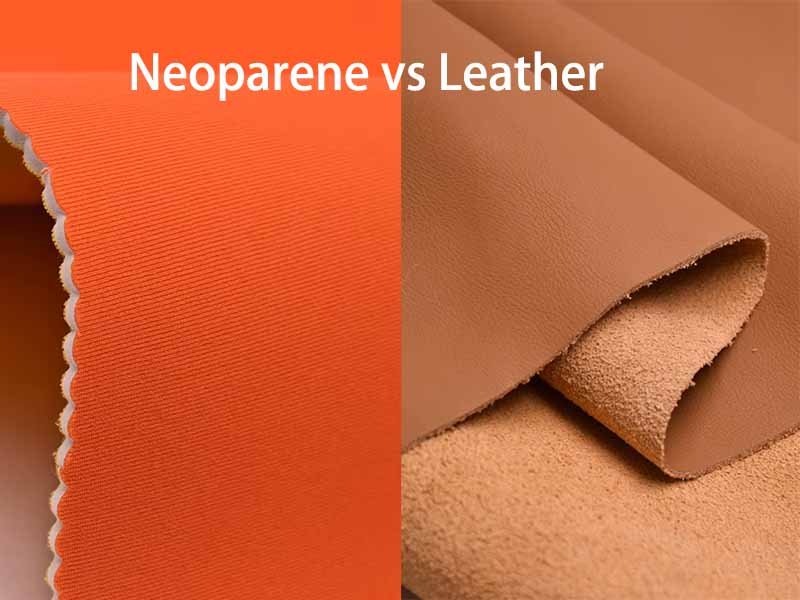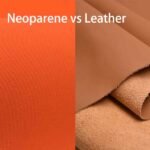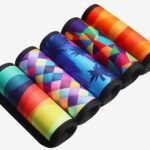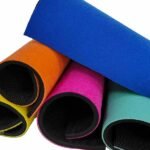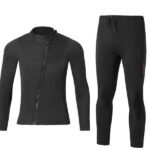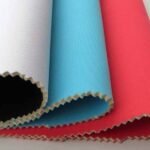Choosing between neoprene and leather has become a central question for brands, startups, and designers who want to deliver products that balance durability, aesthetics, and cost. Both materials carry strong reputations—neoprene for its flexibility and protective qualities, leather for its timeless luxury and durability. Yet the right decision often depends on the type of product you’re developing and the lifestyle needs of your target customers.
The main difference between neoprene and leather lies in performance and perception. Neoprene is lightweight, water-resistant, flexible, and often cheaper to produce, making it ideal for bags, wetsuits, and tech cases. Leather, on the other hand, is stronger, breathable, and luxurious, offering longevity and a premium feel for wallets, belts, and fashion accessories. Your choice depends on whether functionality or prestige is the primary priority.
Think of this decision like choosing between a rugged SUV and a luxury sedan: both can take you places, but the ride and impression are completely different. Some global outdoor brands rely on neoprene to deliver reliable protection in sports and travel gear, while high-end fashion houses lean on leather to preserve brand value and exclusivity. The real question is—where do you want your brand positioned, and what do your customers value most?
What Are the Core Differences Between Neoprene and Leather?
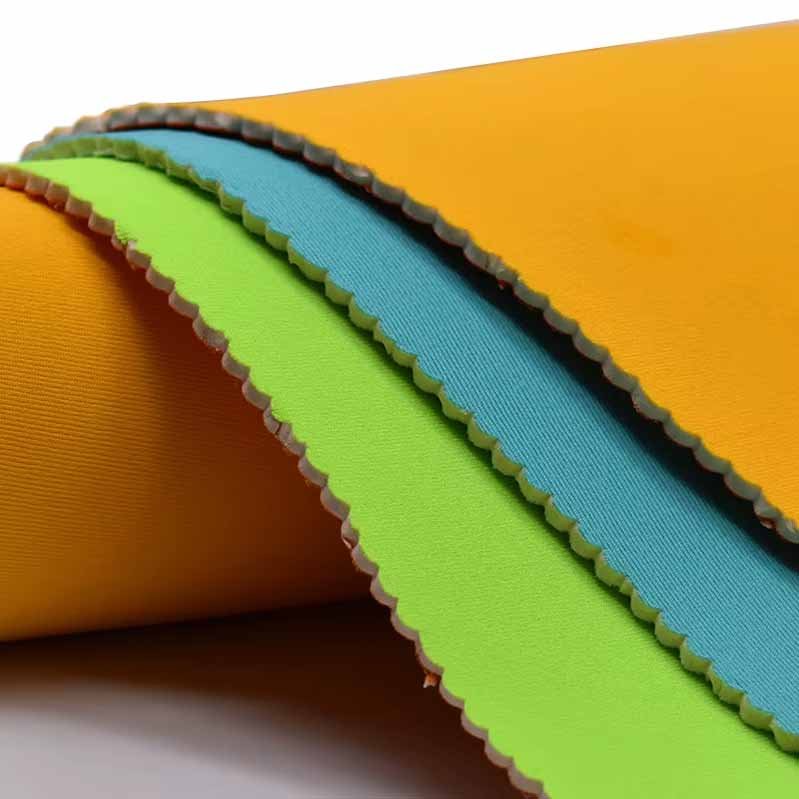
Neoprene and leather differ in origin, structure, and performance. Neoprene is a synthetic rubber made from chloroprene, offering stretch, water resistance, and lightweight protection. Leather is a natural hide, prized for durability, breathability, and luxury appeal. Neoprene works best for sports, outdoor, and protective gear, while leather excels in fashion, accessories, and premium goods.
Neoprene vs Leather Core Differences
When comparing neoprene and leather, the most fundamental difference comes from their origins. Neoprene is a man-made material, invented by DuPont in 1930, created through the polymerization of chloroprene. Its closed-cell foam structure makes it lightweight, compressible, and highly resistant to water, oils, and temperature shifts. In contrast, leather is an organic material derived from animal hides, most commonly cowhide, and processed through tanning. Its structure retains natural collagen fibers, making it exceptionally strong yet breathable.
1. Material Composition & Structure
- Neoprene: Synthetic rubber with a uniform cellular structure; sponge-like and resilient.
- Leather: Natural fibers interwoven in irregular patterns; dense, with variations depending on hide type and finish.
The difference here is critical: neoprene offers predictable and uniform performance, while leather’s performance often depends on the quality of the hide and tanning process.
2. Mechanical Properties
Neoprene shines in flexibility—it can stretch up to 200–300% of its length without breaking. It also absorbs shock and impact, making it perfect for protective sleeves and wetsuits. Leather, though less elastic, has high tensile strength and can withstand decades of wear if maintained properly. A well-made leather bag can last 10–20 years, while neoprene bags usually perform best within 3–5 years of heavy use.
3. Resistance to Elements
One of neoprene’s biggest advantages is its resistance to water, UV, and chemicals. It doesn’t absorb moisture, making it ideal for sports, outdoor, and marine applications. Leather, even when treated, is more sensitive to humidity, stains, and UV exposure. Without proper conditioning, it can crack or fade.
4. Tactile Experience & Aesthetics
This is where leather dominates. Leather carries a premium handfeel, natural scent, and unique patina that develops over time. These qualities resonate with buyers who see their purchase as an investment or status symbol. Neoprene, while smooth and soft, lacks the same emotional and luxury appeal, but it wins in color vibrancy and printability (e.g., sublimation designs for bags or koozies).
Comparison Table: Neoprene vs Leather (Core Properties)
| Property | Neoprene (Synthetic Rubber) | Leather (Natural Hide) |
|---|---|---|
| Origin | Man-made, polymerized chloroprene | Animal hide (cow, goat, etc.) |
| Flexibility | Very high (stretchable, compressible) | Moderate (shapes with use, not elastic) |
| Durability | 3–5 years of heavy use | 10–20+ years with care |
| Water Resistance | Excellent, non-absorbent | Low, needs treatment |
| UV/Heat Resistance | Good (resists cracking) | Susceptible to fading/drying |
| Breathability | Low (insulating) | High (natural fiber pores) |
| Aesthetics | Modern, sporty, vibrant | Luxurious, timeless, patina |
| Maintenance | Low (wipe clean) | High (conditioning, polishing) |
Which Material Performs Better for Bags, Cases, and Wearables?
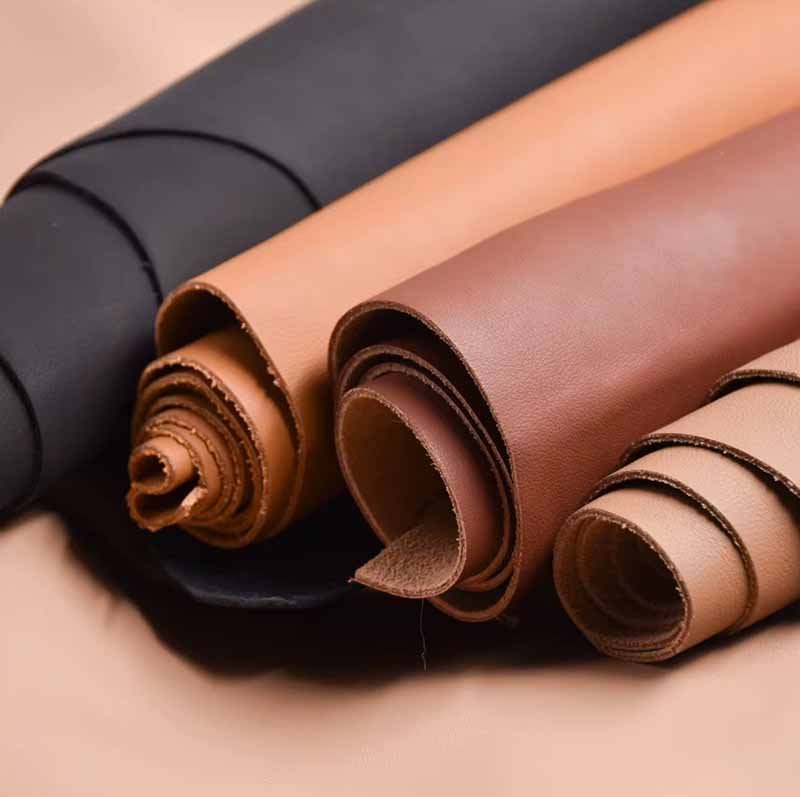
Neoprene performs better for lightweight, water-resistant, and protective products such as sports bags, wetsuits, and tech sleeves, while leather excels in premium bags, wallets, and accessories where durability, breathability, and luxury appeal matter most. The “better” choice depends on whether your product demands function-first utility or style-driven longevity.
Neoprene vs Leather in Real Applications
When deciding which material performs better for bags, cases, and wearable products, we need to evaluate them across several functional and market-oriented dimensions: weight, protection, aesthetics, and customer perception.
1. Bags: Everyday, Travel, and Outdoor
- Neoprene Bags: Neoprene’s lightweight nature makes it ideal for gym bags, tote bags, and travel duffles. A 20L neoprene duffle weighs around 40% less than an equivalent leather duffle. Its water resistance also ensures that sports gear or electronics are shielded from moisture. Brands in the fitness and athleisure markets lean heavily on neoprene because it aligns with their active lifestyle audience.
- Leather Bags: Leather dominates in office totes, luxury handbags, and premium travel luggage. Customers expect their leather bag to age beautifully, gaining patina instead of losing quality. For example, a high-quality leather briefcase can last 15 years, outliving most neoprene designs. However, weight is a drawback: leather bags can weigh 1.5–2x more than neoprene equivalents.
2. Cases: Tech & Specialty Protection
- Neoprene Cases: Neoprene sleeves are the global standard for laptops, tablets, cameras, and headphones. The closed-cell foam absorbs shocks and protects against scratches. The stretch allows it to accommodate different shapes without bulky zippers or straps. For example, in tech accessories, nearly 70% of soft-shell laptop sleeves use neoprene.
- Leather Cases: Leather is more about presentation than protection in cases. A leather phone or laptop case is chosen because it looks sophisticated and enhances brand value. It offers some durability against scratches but cannot compete with neoprene’s cushioning. Luxury buyers still pay a premium because leather communicates professionalism and taste.
3. Wearables: Fashion, Sports, and Performance
- Neoprene Wearables: In clothing, neoprene thrives where flexibility and insulation are essential. Wetsuits, knee braces, gloves, and sport vests use neoprene because it traps body heat while resisting water penetration. Fashion designers have also embraced neoprene for its sculptural qualities—it holds bold shapes better than traditional fabrics.
- Leather Wearables: Leather jackets, belts, gloves, and watch straps symbolize durability and style. A leather biker jacket not only protects in accidents but also defines cultural identity. Leather gloves, especially lined ones, outperform neoprene in cold climates because of their breathability and natural warmth.
Comparative Use-Case Table
| Product Type | Neoprene Performance | Leather Performance |
|---|---|---|
| Tote / Duffle Bags | Lightweight, water-resistant, sporty | Durable, luxurious, heavy-duty |
| Laptop/Tech Cases | Shock absorption, flexible fit | Stylish, professional, less protective |
| Sports/Outdoor Gear | Insulating, weatherproof, compressible | Limited, not water-resistant |
| Fashion Accessories | Trendy, colorful, modern appeal | Timeless, classic, long-lasting |
| Gloves/Wearables | Stretchable, warm in wet conditions | Breathable, premium cold-weather use |
How Do Comfort, Weight, and Ergonomics Compare?
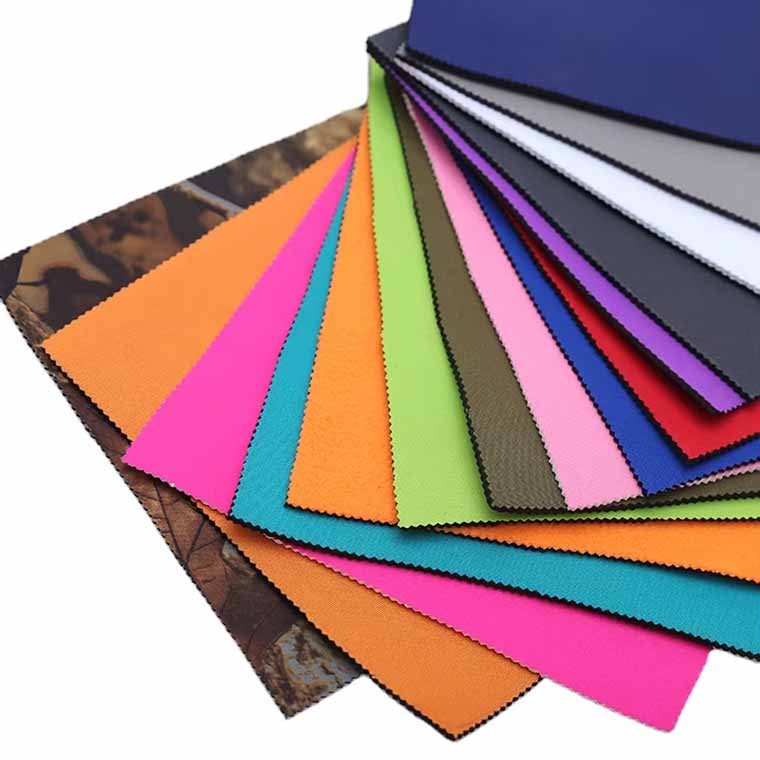
Neoprene is lighter, softer, and more flexible, making it comfortable for long carrying and active use, while leather is heavier, firmer, and less flexible but offers better structure, breathability, and grip. Neoprene products suit sports and casual settings, whereas leather excels in formal, luxury, and structured applications.
Comfort, Weight & Ergonomics
When buyers consider bags, wearables, and cases, comfort and usability often weigh as heavily as durability or price. A bag that looks great but feels heavy or awkward quickly becomes impractical. Comparing neoprene and leather in this context reveals important trade-offs.
1. Weight Differences
- Neoprene: Thanks to its foam-like cellular structure, neoprene is significantly lighter than leather. A 15-inch neoprene laptop sleeve typically weighs around 200–300 grams, while a leather version can weigh 600–800 grams. For travel, gym, or daily commuting, this weight difference can reduce overall load by 20–40%.
- Leather: While heavier, leather provides structural support. A leather briefcase maintains shape even when empty, projecting professionalism. This makes it better for boardroom settings, even though it adds bulk to carrying.
2. Flexibility & Ergonomics
- Neoprene: Stretchable and compressible, neoprene conforms to the body and items inside a bag. This flexibility makes it ergonomic for active users, as straps or handles adapt easily to movement. The downside is less structural integrity—neoprene bags may slump when half-filled.
- Leather: Stiff initially but softens with use, leather strikes a balance between support and flexibility. Leather straps, for example, may require a break-in period, but once softened, they contour naturally to the shoulder. Unlike neoprene, leather does not compress significantly, which may cause discomfort if overloaded.
3. Breathability and Temperature Regulation
- Neoprene: As a closed-cell foam, neoprene insulates but does not breathe. In wearables like gloves or support braces, this means heat retention and sweat buildup during extended use. While useful in wetsuits, it can feel uncomfortable for long-term wear in hot climates.
- Leather: Naturally porous, leather is more breathable. This means leather gloves or straps can regulate temperature better, remaining comfortable in both hot and cold conditions. Breathability is one reason leather remains dominant in luxury footwear, jackets, and gloves.
4. Grip, Touch & Tactile Experience
- Neoprene: Smooth, soft, and cushioned, neoprene feels pleasant in hand. Its non-slip grip makes it useful for cases and handles, especially when wet. However, its texture may be perceived as “sporty” or “casual,” which limits its appeal in luxury markets.
- Leather: Offers a premium tactile experience, with variations like full-grain, nubuck, or suede providing different textures. Over time, leather develops a patina that enhances grip and uniqueness, giving users a sense of ownership and prestige that neoprene cannot replicate.
Comfort & Ergonomics Comparison Table
| Factor | Neoprene | Leather |
|---|---|---|
| Weight | Very light, reduces carrying load | Heavier, adds bulk but sturdier |
| Flexibility | Highly flexible, compressible | Moderately flexible, keeps structure |
| Breathability | Low, traps heat and moisture | High, regulates temperature |
| Comfort in Use | Comfortable for long carrying, casual | Structured, formal, can need break-in |
| Grip & Touch | Soft, sporty, non-slip | Luxurious, premium, unique patina |
Is Neoprene or Leather More Durable and Easier to Maintain?
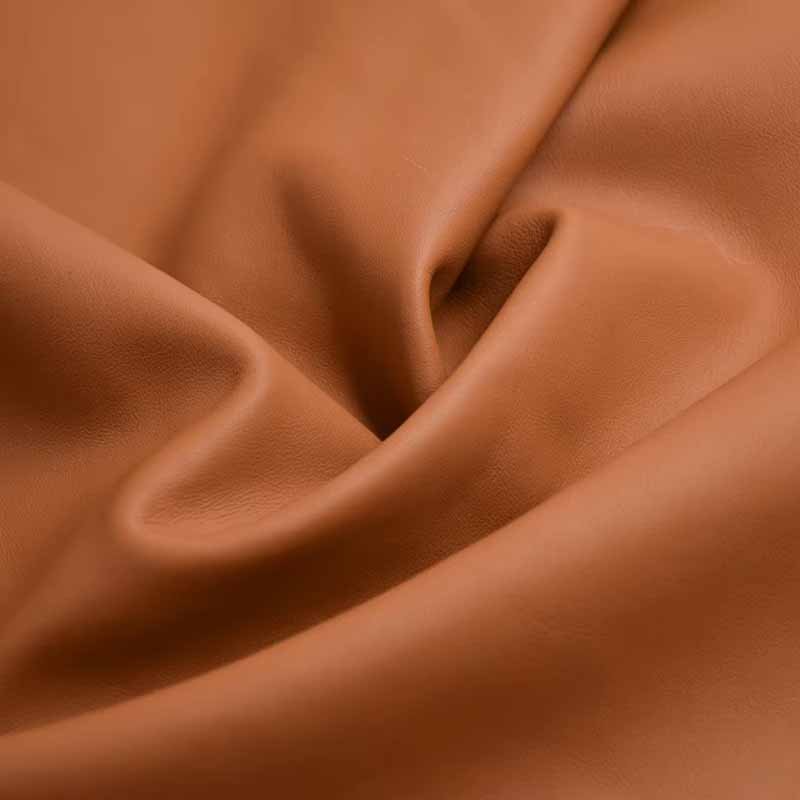
Leather is generally more durable long-term, lasting 10–20 years with proper care, but it requires regular conditioning to prevent cracking or fading. Neoprene is easier to maintain—simply wipe clean—but its lifespan is shorter (3–5 years under heavy use). Neoprene wins in low-maintenance practicality, while leather wins in heritage-level durability.
Durability & Maintenance Comparison
Durability is often the deciding factor for buyers who want value from their investment. Maintenance, meanwhile, shapes the customer experience: some consumers enjoy caring for their goods, while others prefer a “wipe and go” lifestyle.
1. Abrasion, Tear, and Puncture Resistance
- Neoprene: Thanks to its sponge-like closed-cell structure, neoprene resists surface scratches and small impacts. However, sharp objects can puncture it more easily than thick leather. Over time, stretching and compression cycles may reduce elasticity, especially if exposed to excessive heat or UV. Heavy-use neoprene products typically last 3–5 years before showing wear.
- Leather: Full-grain leather, the highest quality type, has outstanding tensile strength and can resist heavy abrasion for decades. Even lower grades, like corrected-grain or split leather, outperform neoprene in tear resistance. A well-kept leather bag may survive 10–20+ years, often looking better as it develops patina.
2. Resistance to Elements
- Neoprene: Neoprene is naturally water-resistant, chemical-resistant, and UV-stable, making it perfect for marine, sports, and outdoor environments. Rain, saltwater, or sweat have little long-term impact.
- Leather: Sensitive to moisture and sunlight. Without treatment, it can absorb water, warp, or fade. Waterproofing sprays and conditioners are essential. Leather is less ideal for outdoor adventure gear unless reinforced with coatings.
3. Cleaning & Daily Maintenance
- Neoprene: Extremely low-maintenance. A damp cloth usually restores its look. Machine washing is even possible for some neoprene items like sleeves and small bags. It requires little to no special products, making it practical for busy, modern lifestyles.
- Leather: Needs regular care—cleaning, conditioning, and polishing. Failure to maintain leads to cracking, fading, or stiffness. However, this ritual is part of the luxury ownership experience: buyers who invest in premium leather often enjoy caring for it, seeing it as a bonding process.
4. Repairability & Longevity
- Neoprene: Hard to repair once torn. Punctures or seam failures usually require replacement. Some adhesives or patches exist, but they rarely restore the original look.
- Leather: Exceptionally repairable. Leather goods can be re-stitched, re-dyed, conditioned, and restored by specialists. Many high-end leather bags come with lifetime repair warranties, a selling point neoprene products cannot match.
Durability & Maintenance Comparison Table
| Factor | Neoprene | Leather |
|---|---|---|
| Average Lifespan | 3–5 years (heavy use) | 10–20+ years (with care) |
| Scratch Resistance | Moderate, resists light scratches | High, hides wear, gains patina |
| Tear Resistance | Lower, prone to punctures | Very high, withstands heavy loads |
| Water Resistance | Excellent, waterproof | Low, requires treatment |
| Maintenance | Low, wipe clean | High, needs conditioning & polish |
| Repairability | Limited | Strong, highly repairable |
What About Sustainability, Safety, and Certifications?
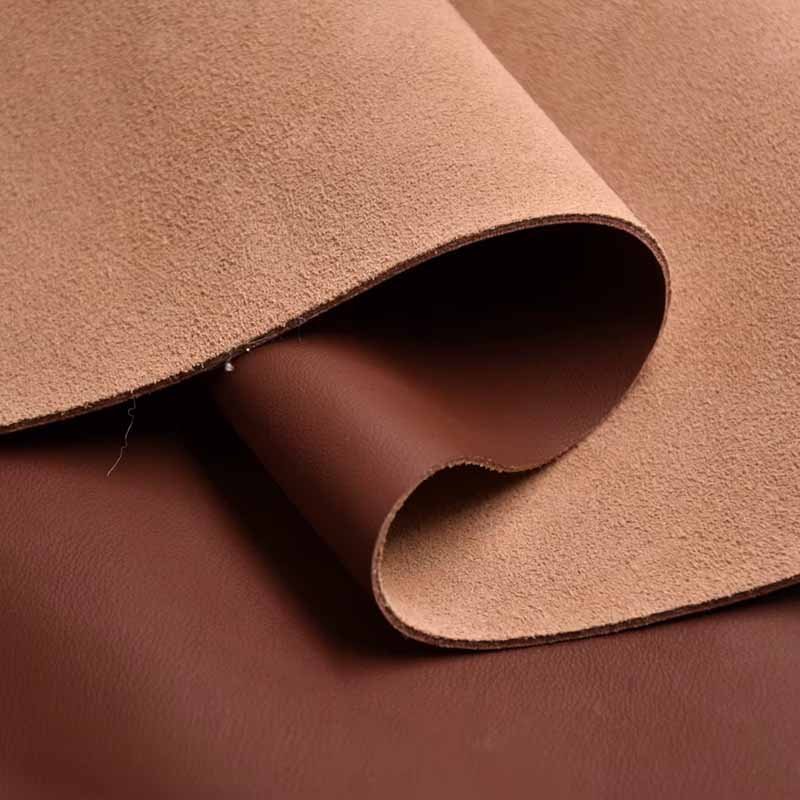
Neoprene and leather face sustainability challenges but in different ways. Neoprene, as a synthetic rubber, relies on petrochemicals but now has recycled and limestone-based alternatives. Leather is natural but raises animal welfare and tanning pollution concerns. Certifications like OEKO-TEX®, REACH, and Leather Working Group (LWG) help buyers ensure safety, reduced toxicity, and ethical sourcing. The right choice depends on whether buyers prioritize recycled synthetics or responsibly sourced natural hides.
Sustainability, Safety & Compliance
Sustainability has become one of the top three buying criteria for international brands. When comparing neoprene and leather, the decision isn’t just about performance—it’s about how the material fits into eco-conscious supply chains and meets regulatory requirements.
1. Environmental Impact of Neoprene vs Leather
- Neoprene: Traditionally produced from petroleum-based chloroprene, neoprene is criticized for its carbon footprint. However, innovations like limestone-based neoprene and recycled neoprene blends are gaining traction. These alternatives reduce reliance on fossil fuels and appeal to eco-conscious consumers.
- Leather: As a byproduct of the meat industry, leather’s sustainability argument is complex. Supporters claim it “upcycles” waste hides into durable goods, while critics highlight the high water usage, deforestation, and chemical tanning pollution. The tanning process, especially chromium tanning, remains one of the most scrutinized steps.
2. Safety Standards and Consumer Health
- Neoprene: Modern neoprene used in consumer products often meets OEKO-TEX® Standard 100, ensuring no harmful chemicals come into direct contact with skin. Non-toxic adhesives and water-based lamination are increasingly common in high-quality neoprene factories.
- Leather: Leather may contain residues from tanning, dyes, or finishes. Compliance with REACH (Registration, Evaluation, Authorisation and Restriction of Chemicals) in Europe and CPSIA in the U.S. is essential. Brands sourcing leather must ensure hides are free from azo dyes, heavy metals, and phthalates.
3. Certifications That Matter to Buyers
- OEKO-TEX® Standard 100: Ensures textiles and foams are safe for human use.
- REACH (EU): Regulates chemicals used in production, protecting consumers and workers.
- Leather Working Group (LWG): Grades tanneries on environmental stewardship, water use, and chemical management.
- GRS (Global Recycled Standard): Applies to recycled neoprene and synthetic blends.
- Higg Index: Used to measure sustainability performance of both neoprene and leather in the supply chain.
4. Market Examples & Shifts
- Sports brands like Patagonia and Quiksilver have introduced limestone and Yulex® (plant-based neoprene) to meet eco-demand in wetsuits.
- Luxury houses such as Gucci and Louis Vuitton now require suppliers to be LWG-certified to reduce environmental backlash.
- Mid-size brands sourcing from Asia increasingly request OEKO-TEX® and REACH compliance from their OEM/ODM partners to gain easier entry into European and U.S. markets.
Sustainability & Certification Comparison Table
| Factor | Neoprene | Leather |
|---|---|---|
| Origin | Petrochemical (chloroprene) or limestone-based | Animal hide, byproduct of meat industry |
| Eco Alternatives | Recycled neoprene, plant-based neoprene | Vegetable tanning, chrome-free leather |
| Carbon Impact | Moderate to high (depending on type) | High (livestock + tanning emissions) |
| Water Use | Low in production | Very high in tanning (20,000 L per hide) |
| Key Certifications | OEKO-TEX®, REACH, GRS, Higg | LWG, OEKO-TEX®, REACH, CPSIA |
| Consumer Safety | Non-toxic adhesives, foam safety tests | Must avoid heavy metals & toxic finishes |
How Do Cost, MOQ, and Lead Time Compare for Buyers?
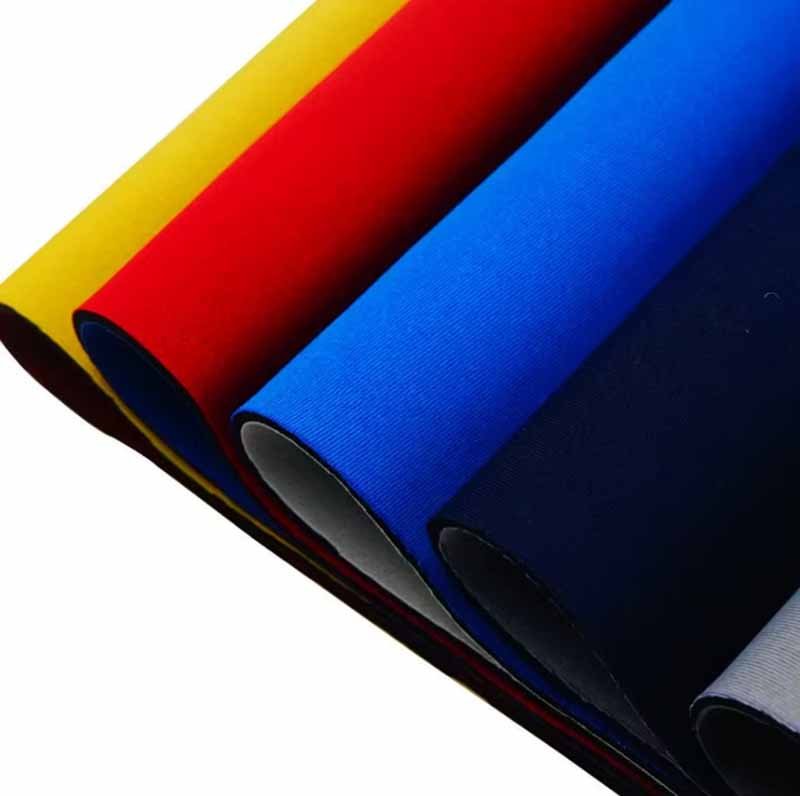
Neoprene typically offers lower MOQs (50–100 pcs), faster sampling (7–10 days), and lower upfront costs, making it ideal for startups and mid-sized buyers. Leather requires higher MOQs (300+ pcs), longer sampling times (2–4 weeks), and higher material costs, but offers longer product lifespans and stronger resale value. Neoprene is best for quick market entry, while leather suits long-term premium investments.
Cost, MOQ & Lead Time Analysis
When sourcing internationally, buyers rarely look at materials in isolation—they must weigh cost per unit, minimum order requirements, and lead times against their business model. The neoprene vs. leather comparison highlights critical trade-offs.
1. Material & Manufacturing Cost Structure
Neoprene:
- Material cost: $3–7 per square meter depending on thickness (2–5mm common).
- Production: Cutting and sewing are straightforward due to uniform thickness.
- Typical finished bag cost: $6–15 FOB China, depending on size and features.
Leather:
- Material cost: $18–25 per square foot for mid-grade cowhide; premium hides can exceed $40.
- Production: Skilled labor required for cutting, skiving, edge painting, and stitching.
- Typical finished bag cost: $40–120+ FOB China, depending on type and finish.
2. Minimum Order Quantity (MOQ)
- Neoprene: Thanks to digital sublimation and fabric lamination, MOQ can start as low as 50–100 pcs. This makes neoprene attractive for promotional campaigns, new product launches, or boutique brands.
- Leather: Most tanneries require bulk hide purchases, pushing MOQ to 300–500 pcs minimum for economic viability. Small-batch production is possible, but at significantly higher per-unit costs.
3. Lead Time for Sampling & Bulk Orders
Neoprene:
- Sampling: 7–10 days (faster with stock materials).
- Bulk production: 25–35 days typical.
Leather:
- Sampling: 2–4 weeks, longer if custom tanning is needed.
- Bulk production: 45–60 days, depending on hide preparation and craftsmanship.
4. Lifecycle Cost vs. Ownership Value
- Neoprene: Lower upfront cost but shorter lifecycle (3–5 years). Brands can encourage repeat sales as customers replace worn items.
- Leather: Higher upfront cost but longer lifecycle (10–20 years). Products retain resale value and align with premium pricing strategies.
Cost, MOQ & Lead Time Comparison Table
| Factor | Neoprene | Leather |
|---|---|---|
| Material Cost | $3–7 / m² | $18–25 / ft² (mid-grade cowhide) |
| Finished Bag FOB | $6–15 | $40–120+ |
| MOQ | 50–100 pcs | 300–500 pcs |
| Sampling Lead Time | 7–10 days | 2–4 weeks |
| Bulk Lead Time | 25–35 days | 45–60 days |
| Product Lifespan | 3–5 years | 10–20+ years |
| Resale Value | Low (replaceable) | High (heritage investment) |
Case Study: Market Entry Strategy
- Outdoor Startup (Canada): Needed 200 gym bags with custom prints. Neoprene allowed them to order 2 SKUs × 100 pcs each, receive samples in 9 days, and ship bulk in 30 days. They launched within 6 weeks.
- Luxury Brand (Italy): Commissioned 500 leather tote bags with embossed logos. Lead time was 55 days, but the product retailed for €450 each, achieving 4× gross margin and strong brand positioning.
Do Real-World Use Cases Point Clearly to One Choice?
Real-world use cases show neoprene is favored in sports, outdoor, and tech protection products due to its light weight, flexibility, and water resistance, while leather dominates luxury, fashion, and heritage goods for its durability, prestige, and resale value. Brands often adopt a hybrid approach—using neoprene for mass-market functionality and leather for premium collections.
While technical comparisons are helpful, the clearest insights come from actual applications. By examining how different industries use neoprene and leather, we can see where each material excels and where a combination might work best.
1. Sports & Outdoor Industry
- Neoprene Wins: Wetsuits, surf gloves, fishing rod sleeves, and gym bags rely on neoprene’s insulating, waterproof, and flexible properties. For example, nearly 90% of wetsuits worldwide are made from neoprene or neoprene alternatives.
- Leather’s Role: Limited, mostly in heritage gear such as leather hiking boots or gloves. These items emphasize durability but require treatment against water.
2. Technology & Electronics Accessories
- Neoprene Wins: Laptop sleeves, tablet covers, camera cases, and headphone pouches thrive with neoprene’s shock absorption and stretch fit. Tech brands choose neoprene for its low cost and quick customization (logos, prints).
- Leather’s Role: High-end executive accessories (iPad cases, laptop briefcases). Buyers purchase leather cases not for protection but for aesthetic prestige in professional settings.
3. Fashion & Lifestyle
- Leather Wins: Handbags, belts, wallets, and luxury footwear use leather for timeless appeal and patina. Luxury brands build entire collections around leather craftsmanship.
- Neoprene’s Role: Fashion designers increasingly use neoprene for structured dresses, trendy backpacks, and colorful totes. It appeals to younger audiences looking for bold, modern aesthetics rather than tradition.
4. Corporate & Promotional Goods
- Neoprene Wins: Koozies, bottle holders, and branded giveaways rely on neoprene for low-cost, easy printing, and low MOQs. A campaign can order 500 units at a fraction of leather’s cost.
- Leather’s Role: Reserved for high-end corporate gifts (embossed leather diaries, wallets, or key holders) that convey long-term value and respect.
Decision Matrix: Neoprene vs Leather by Industry
| Industry / Use Case | Neoprene Advantage | Leather Advantage |
|---|---|---|
| Sports / Outdoor | Insulation, waterproof, flexible | Limited (boots, gloves, heritage gear) |
| Tech Accessories | Shock absorption, lightweight, low MOQ | Luxury perception, executive appeal |
| Fashion / Lifestyle | Trendy, modern, colorful | Timeless, premium, patina development |
| Corporate / Promo | Low-cost, easy printing, fast turnaround | Prestige gifting, long-lasting branding |
Case Studies
- Fitness Startup (US): Launched neoprene gym duffles and sleeves with sublimated branding. MOQ of 100 pcs per SKU enabled a 5-week market entry with minimal investment.
- Luxury Fashion House (France): Continued reliance on full-grain calfskin for handbags. Despite 10× higher production cost, leather products maintained strong resale demand and long waiting lists.
- Tech Brand (Germany): Offered both neoprene laptop sleeves for students and leather executive cases for business clients. This dual strategy expanded market coverage without brand dilution.
Conclusion
Choosing between neoprene and leather isn’t about declaring a universal winner—it’s about understanding your product needs, customer expectations, and brand positioning.
- Neoprene shines in lightweight, functional, colorful, and low-MOQ projects—perfect for sports gear, tech sleeves, promotional items, and active lifestyle products.
- Leather remains the gold standard for luxury, heritage, and long-term investment—ideal for handbags, wallets, belts, and premium corporate gifts.
At Szoneier, we bring over 18 years of experience in material R&D and manufacturing. Our capabilities include:
- Neoprene Production: Free design service, low MOQ (from 50 pcs), sublimation/digital printing, fast sampling (7–10 days), and short lead times (25–35 days).
- Leather Production: Premium-grade hides, advanced tanning compliance (REACH, LWG, OEKO-TEX®), heritage craftsmanship, and long-lasting durability.
- Hybrid Solutions: Custom projects that blend neoprene + leather for the perfect balance of practicality and luxury.
Whether you are a startup testing new designs or a luxury brand building premium collections, Szoneier offers flexible, end-to-end OEM/ODM solutions to bring your vision to life.

